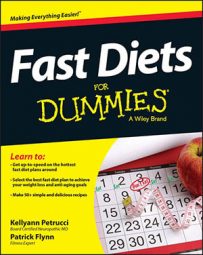Here's an easy model to follow if you're seriously considering micro-fasting. Walk through a day of micro-fasting, starting with the morning fasting routine, working through an intense exercise regimen, and finishing up with an eating window.
For the sake of convenience, assume that you stopped eating the night before at approximately 8 p.m.
Here is what your day may look like if you're fasting:
6 a.m. You wake up, roll out of bed, and brew a fresh cup of organic green tea.
Light stimulants, such as organic green tea, pu-erh tea, black tea, and coffee are all permitted during a fast, as long as you don't put anything else into them, and as long as you don't overdo drinking them (one to two cups is more than enough) because they can help boost the positive effects of fasting, particularly fat burning.
7 a.m. You start your day with a brisk, 30-minute fasted walk outdoors.
When fasting — and even when not fasting — try to start your day with some form of light, fun activity to help naturally energize your mind and body. In conjunction with some green tea, it can also help to boost the fat-burning effects of fasting.
11 a.m. You begin your intense exercise routine (you can do this on your lunch break at work). After properly warming up, you do sprints for 15 minutes and lift heavy weights at a relatively high intensity for another 15 minutes. To cool down, you go for another brisk, 30-minute walk outdoors.
Noon You enjoy your first meal. You can opt for a spinach and salmon salad (spinach, salmon, cucumbers, tomatoes, extra-virgin olive oil, and balsamic vinegar). You can wash it down with clean, cool water, and then satisfy your sweet tooth with a handful or two of blueberries.
Start all your meals with protein, fats, and veggies, such as the spinach and salmon, before moving onto the more dense and/or sweet carbohydrates, such as the blueberries.
3 p.m. You're hungry again, so you fix another meal. This time you can eat exactly the same meal as before. It's actually a good practice, as well as convenient, to eat many of the same things over and over again. To be candid, a good diet is mostly a boring and repetitious one!
If it's the weekend or you're working from home, you can make an omelet with three eggs, spinach, onions, tomatoes, and peppers. You wash it down with a nice big glass of clean, cool water; this time, squeeze some fresh lemon into it.
6 p.m. Hunger strikes again! You eat a grass-fed steak with a generous side of asparagus and a small side salad, all brushed with extra-virgin olive oil. What's great about micro-fasting is that you still get to engage in the most social meal of the day — dinner! So this is where you can finally sit down and eat with your family.
7:30 p.m. Still a little hungry, you want one more meal before calling it a day. To keep it simple, you eat a handful of cashew nuts, a handful of mixed berries, and a few pieces of leftover turkey from the night before. You finish eating by 8 p.m., so your fast has to last until noon the next day.
10:30 p.m. Head to bed and aim for getting at least eight hours of sleep. Retire earlier if you expect to rise at 6 a.m. the next day.
Make your last meal of the day a higher fat, lower carb meal, because fat helps promote sleep. A spoonful of almond or cashew butter is a great snack. As a general rule, stick just to nuts and meat for a good night's sleep.
This example can show you how simple micro-fasting can be and that you don't need to make the practice unnecessarily complicated or difficult. When your eating window rolls around, eat whenever you're hungry; just stop eating when you're not hungry!

